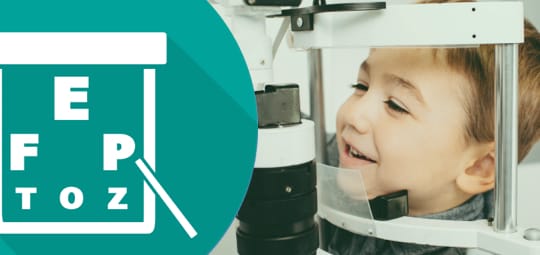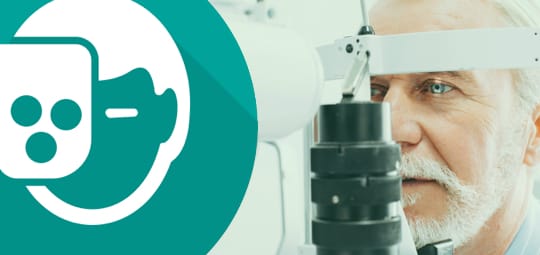Myopic Eyes May Need Intervention
Myopia, or nearsightedness, is a common eye condition where far-away objects are difficult to see while nearby objects remain clear. The American Academy of Ophthalmology estimates that nearly 50% of the world will have myopia by 2050.
Myopia typically develops in childhood, progressing until adulthood. Without proper intervention, a child with myopia may have to rely on heavy prescriptions later in life. Severe cases of myopia increase the risk of several eye diseases, but myopia control can help prevent this.

What Causes Myopia?
A child with myopia has differently shaped eyes. The eyeball is typically too long, or the cornea is curved too steeply. When light enters an eye with myopia, light focuses at a point in front of the retina.
Ideally, light should focus directly on the retina to provide a clear image. Researchers and medical professionals theorize other factors may contribute to myopia development during childhood. Less time spent outdoors, increased screen time, and family history may contribute to myopia development.
Common Myopia Symptoms
Recognizing the common myopia signs can help identify if your child needs an eye exam. Children may not realize they have a vision problem if they have always had it, so watch for the following symptoms:
- Sitting close to the television & other screens
- Frequent headaches
- Difficulty focusing in school
- Frequent squinting
- Holding books close to their face when reading
Myopia Progression in Children
Myopia can affect anyone, but it primarily progresses during childhood. While myopia will eventually stabilize in adulthood, early intervention can help slow its progression when the eyes are still growing.
As children grow, so do their eyes. This growth can cause a mild case of myopia to potentially develop into a more severe form (high myopia).
High myopia occurs when a person’s vision requires -5.00 to -6.00 diopters to correct their nearsightedness. Someone who has high myopia is at risk of several serious eye conditions, including:
With the proper treatments, myopia progression can be slowed or reduced. Many control methods slow or potentially stop eyeball growth to prevent your child’s vision from worsening.
How Can You Control Myopia Progression?
At Stanford Ranch Optometry, we offer MiSight® 1 day contact lenses to control myopia in children. These contacts are daily-disposable lenses designed for children as young as 8.
MiSight lenses have peripheral rings surrounding the center of the lens to assist with myopia control. Research has found MiSight contact lenses to be an effective form of slowing myopia progression.
Protect Your Child’s Vision
Myopia progression can lead to heavy prescriptions in adulthood, but proper intervention can protect your child’s vision. Please book an appointment with us so we can help treat myopia progression.

OUR LOCATION
Come See Us Today
Experience full-spectrum eye care at Stanford Ranch Optometry.
Parking
There is ample parking in the front and to the side of the office.
Our Address
- 2320 Sunset Blvd., Suite #110
- Rocklin, CA 95765
Contact Information
- Phone: 916-624-9396
- Email: StanfordRanchOptometrykl@gmail.com
Hours Of Operation
- Monday: 9:00 AM – 6:00 PM
- Tuesday: 9:00 AM – 6:00 PM
- Wednesday: 9:00 AM – 6:00 PM
- Thursday: 9:00 AM – 6:00 PM
- Friday: 9:00 AM – 5:00 PM
- Saturday: Closed
- Sunday: Closed
Our Services
Our Brands












